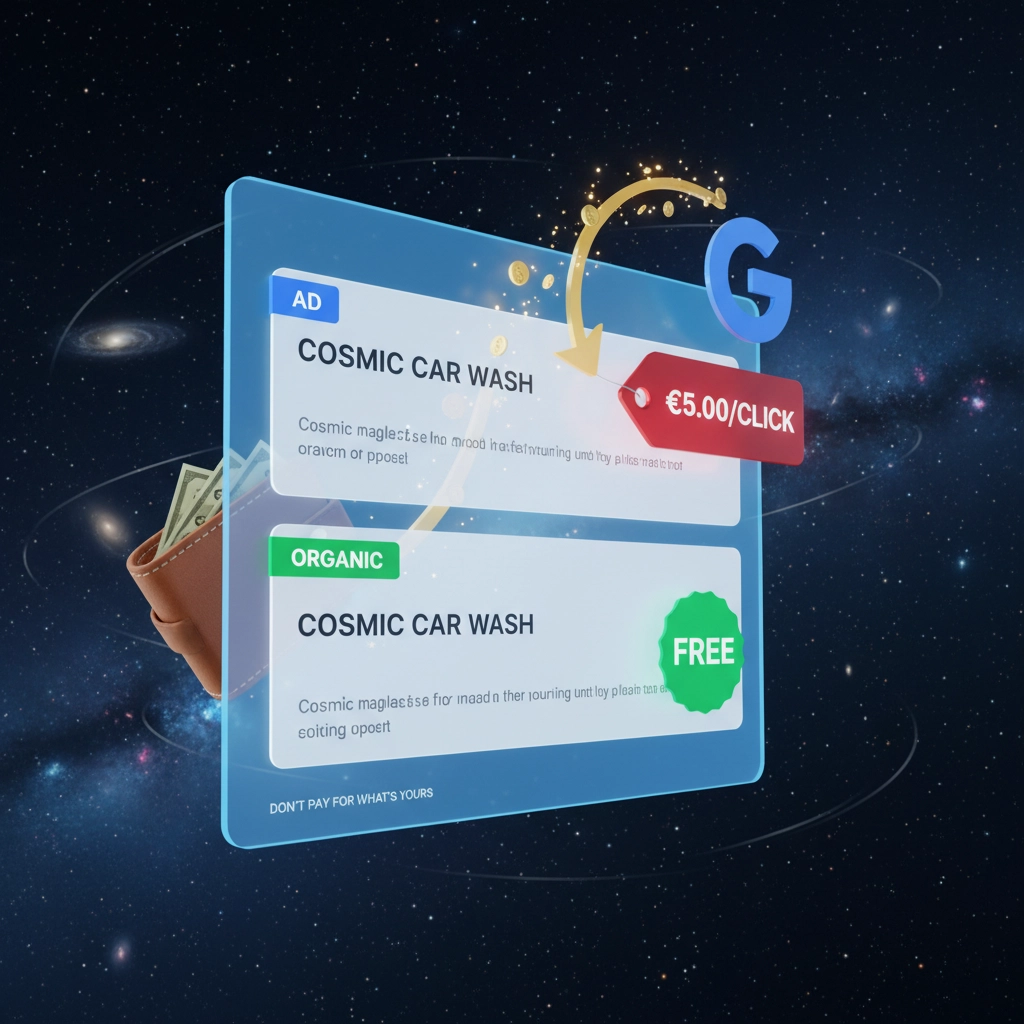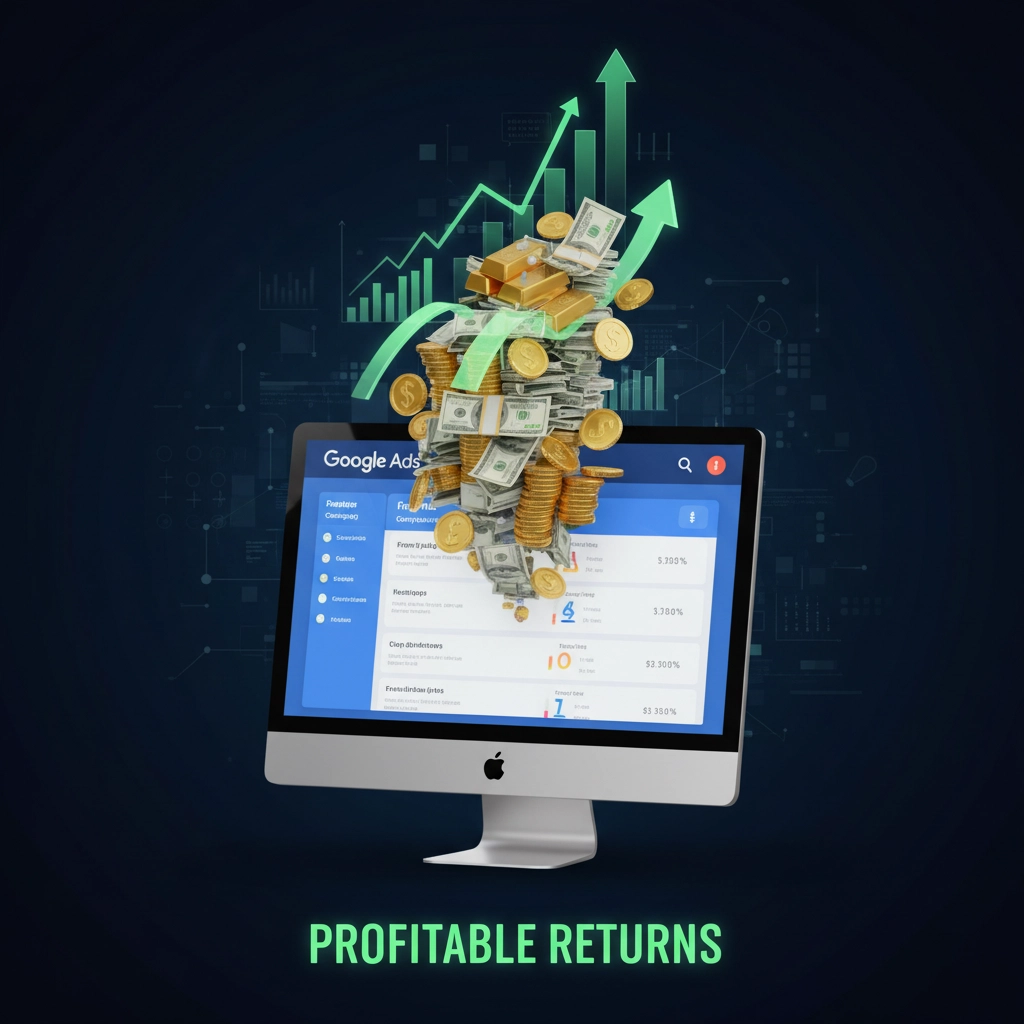5 Steps to Improve Your Google Ads Effectiveness (For Service-Based Small Businesses)
- Adam Churchwell
- 5 days ago
- 6 min read
Updated: 3 days ago
Running Google Ads for your service-based business can feel like throwing money into a black hole. You're spending hundreds or thousands each month, but are you actually getting customers? If your ads aren't converting or you're seeing your budget disappear faster than you can track, you're not alone.
The good news is that most Google Ads problems come down to five fixable issues. These aren't complicated technical fixes that require a computer science degree. They're smart business decisions that can dramatically improve your return on investment.
Step 1: Run Ads Only When They Can Lead to Sales
This sounds obvious, but you'd be shocked how many service businesses run ads 24/7 without thinking about when their customers actually need them.
If you're a plumber, electrician, HVAC contractor, or any other service business that doesn't operate around the clock, why are you paying for clicks at 2 AM? Someone searching for "emergency plumber" at midnight might be in crisis mode, but if you can't answer your phone or book the appointment until morning, that ad click just cost you money for nothing.

Take a hard look at your business hours and your actual sales process. When can someone who clicks your ad actually become a customer? If you're a wedding photographer, running ads on Tuesday at 11 PM probably isn't hitting people when they're planning their big day. Most of your ideal customers are browsing and making decisions during evening hours or weekends when they have time to plan.
Here's how to fix this: Go into your Google Ads account and set up ad scheduling (also called dayparting). Only run your ads during hours when someone can realistically hire you or book a consultation. For most service businesses, this means business hours plus maybe a few hours in the evening when people are researching after work.
You might worry about missing out on potential customers, but think about it this way: would you rather get 100 clicks from people who can't hire you right now, or 60 clicks from people who are ready to pick up the phone and book your services?
Step 2: Stop Competing Against Yourself
Here's a mistake that costs businesses serious money: running ads for searches where you already show up at the top of Google naturally.
Let's say you own Johnson Plumbing Services and you've built a great website with solid SEO. When someone searches "Johnson Plumbing Services," you show up as the #1 organic result. That's fantastic. But if you're also running Google Ads and bidding on "Johnson Plumbing Services," you're essentially paying Google for traffic you would have gotten for free.

This happens more often than you think. Your Google Ads might be showing up above your own organic listing, and you're paying $3, $5, or even $10 every time someone clicks the ad instead of your free listing. That's money straight out of your pocket for customers who were already looking specifically for you.
The solution is simple but often overlooked: add your own business name as a negative keyword in your Google Ads campaigns. This tells Google not to show your ads when people search for your exact business name.
Go into your Google Ads account, find the negative keywords section, and add variations of your business name. Include your full business name, shortened versions, and common misspellings. So if you're Johnson Plumbing Services, you'd add "Johnson Plumbing," "Johnson Plumbing Services," "Jonson Plumbing" (common misspelling), and any other variations.
The only exception? If you have competitors trying to steal your traffic by bidding on your business name, you might need to run defensive ads. But for most small service businesses, this isn't necessary and you're better off saving that ad spend for new customer acquisition.
Step 3: Know When to Let AI Do the Heavy Lifting
Google Ads used to require you to write every headline, description, and choose every keyword manually. Those days are largely over, and fighting this change is costing you money and time.
Google's Performance Max and Smart campaigns use artificial intelligence to test different combinations of your ads, target the right people, and adjust bids automatically. For small service businesses, this is usually better than trying to manage everything manually unless you have serious experience and time to dedicate to constant optimization.

Here's when to use AI-powered campaigns:
You're spending less than $3,000 per month on ads
You don't have time to check and adjust your campaigns weekly
You're not seeing good results from manual campaigns
You want to test new services or expand to new areas
Here's when to stick with manual campaigns:
You have very specific, narrow targeting needs
You're an experienced advertiser who enjoys the control
You've already optimized manual campaigns that are working well
You need to exclude specific keywords or audiences for business reasons
For most service businesses, Performance Max campaigns are the way to go. You provide Google with your business information, service areas, some photos, and basic ad copy. Google's AI then tests thousands of combinations to find what works best for your specific business.
Don't worry about losing control. You can still see what's working, add negative keywords, and adjust your budget. You just don't have to spend hours every week tweaking bids and writing ad variations.
Step 4: Track Your ROAS Like Your Business Depends on It
ROAS stands for Return On Ad Spend, and it's the most important metric you're probably not tracking properly. Simply put, ROAS tells you how much money you make for every dollar you spend on ads.
If you spend $1,000 on Google Ads and those ads generate $3,000 in revenue, your ROAS is 3:1. For every dollar you invested in ads, you got three dollars back. That's usually a good return, but it depends on your profit margins and business goals.

Here's the problem: most small business owners only look at clicks, impressions, and maybe conversions. They're not connecting their ad spend to actual revenue. You might be getting lots of clicks and even leads, but if those leads aren't turning into paying customers, your ads aren't working.
To track ROAS properly, you need to:
Set up conversion tracking that follows customers from click to purchase
Assign dollar values to different types of conversions (a consultation request might be worth $500, while a small service call might be worth $150)
Calculate the total revenue generated from ad-driven customers each month
Divide that revenue by your total ad spend
Aim for a ROAS of at least 3:1 for most service businesses, though this varies by industry and profit margins. A house cleaning service with lower margins might need 4:1 or 5:1, while a high-end consulting service might be profitable at 2:1.
Check your ROAS monthly, not daily. Google Ads can have natural ups and downs, and you need enough data to see real trends. If your ROAS is consistently below your target, it's time to pause low-performing campaigns and keywords and double down on what's working.
Step 5: Get Professional Help When You Need It
Managing Google Ads effectively takes time, experience, and constant attention. If you're running a service business, your time is probably better spent actually serving customers than tweaking ad campaigns every week.
There's no shame in admitting that Google Ads isn't your expertise. You wouldn't try to fix your own plumbing if you're an accountant, and you shouldn't feel obligated to manage complex advertising campaigns if you're a contractor or consultant.

The math is straightforward: if hiring a professional can improve your ROAS from 2:1 to 4:1, they're essentially paying for themselves while freeing up your time for billable work. A good ads manager will also catch expensive mistakes before they drain your budget and identify opportunities you might miss.
At ASC Consultants, we offer an Online Spend Analysis that shows you exactly where your ad dollars are going and how to get better results. We'll audit your current campaigns, identify the biggest opportunities for improvement, and show you a clear path to better ROAS.
Whether you work with us or another qualified agency, make sure they:
Provide transparent reporting on your actual return on investment
Explain their strategies in plain English, not technical jargon
Focus on your business goals, not just ad metrics
Offer to implement changes rather than just giving you a list of recommendations
Start With What You Can Control
You don't need to implement all five of these steps at once. Start with the easiest win: adjusting your ad schedule to only run when customers can actually hire you. This change takes five minutes and can improve your results immediately.
Then tackle your negative keywords to stop competing against yourself. These two changes alone often improve ROAS by 20-30% without any additional ad spend.
Once you've handled the low-hanging fruit, you can decide whether to experiment with Performance Max campaigns or stick with your current setup while focusing on better ROAS tracking.
Remember, the goal isn't perfect ads. The goal is profitable ads that bring in more money than they cost while fitting into your overall business strategy. Sometimes simple changes make the biggest difference.


Comments